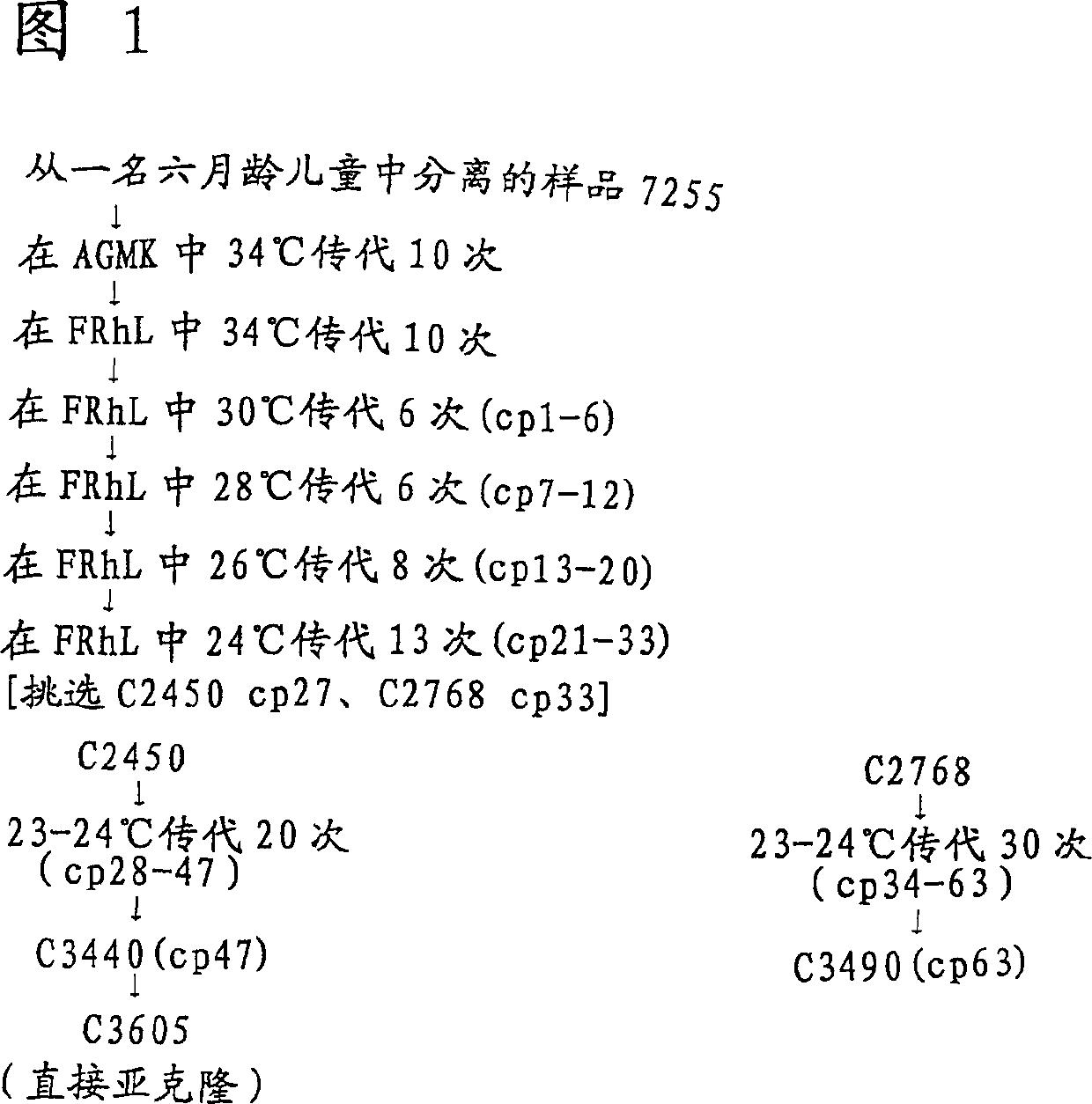Temperature-sensitive and cold-adapted human parainfluenza virus type 2(HPIV-2) and vaccines based on such virus
A technology of human parainfluenza virus and virus strains, applied in the direction of microorganism-based methods, viruses, antiviral agents, etc., can solve problems such as difficulty in adapting to in vitro growth conditions, lowering temperature, etc.
- Summary
- Abstract
- Description
- Claims
- Application Information
AI Technical Summary
Problems solved by technology
Method used
Image
Examples
Embodiment 1
[0031] According to their phenotypic characteristics, three ts and ca clones, C3440, C3464 and C3490, were selected for evaluation in hamsters. Table 3 illustrates the ts and ca phenotypes of these selected clones and the wt parents of these HPIV-2 vaccine candidates. The newly weaned hamsters are deeply anesthetized and vaccinated intranasally with wt parental virus or a candidate vaccine. Table 4 shows the titer of the inoculum received by the hamster. The total amount of inoculum received by each animal is 0.1ml (0.05ml / nostril). To prevent cross-contamination, use a micropipette with aerosol-resistant pipette tip. Hamsters were vaccinated with a candidate vaccine or wt parental virus in groups of 20. Four hamsters in each group were euthanized at five time points (i.e., 1, 2, 3, 4, and 7 days after vaccination). Ten non-vaccinated animals (2 at each of the five time points) were euthanized as a control group. On the day of harvest, the lungs and turbinates of each animal were ...
Embodiment 2
[0034] Each clone evaluated in hamsters was also tested for genetic stability in vitro. We conducted a stress test on each clone. The method was to pass each clone into successive generations blindly, once a week for a total of four weeks, and the temperature was the allowable temperature (32°C), the intermediate allowable temperature (35°C), and Limit the temperature (39°C) to determine whether the virus reverts back to the wild-type phenotype under the selective pressure that is not conducive to the ts phenotype. Table 5 shows the results of the stress test. After each passage, the virus was titrated at 32°C to 39°C to detect ts phenotype changes. Each clone maintained its ts phenotype after serial passage at 39°C, indicating that they were genetically stable.
[0035]In addition to the stress test, we select plaques from each of the three cold-passage viruses to determine whether there is a mixture of virus phenotypes in the virus library. (Table 6) Each of the 10 subclones sel...
Embodiment 3
[0037] The three clones of SLU7255, C3464 (cp50), C3490 (cp51), and C3605 (cp63, a subclone of C3440), have become the most promising vaccine candidates. These three clones were evaluated in seronegative rhesus monkeys. Prepare a virus library for each clone and wt virus in Vero cells. Table 7 shows the titers of the libraries used in the following examples.
PUM
| Property | Measurement | Unit |
|---|---|---|
| diameter | aaaaa | aaaaa |
Abstract
Description
Claims
Application Information
 Login to View More
Login to View More - R&D
- Intellectual Property
- Life Sciences
- Materials
- Tech Scout
- Unparalleled Data Quality
- Higher Quality Content
- 60% Fewer Hallucinations
Browse by: Latest US Patents, China's latest patents, Technical Efficacy Thesaurus, Application Domain, Technology Topic, Popular Technical Reports.
© 2025 PatSnap. All rights reserved.Legal|Privacy policy|Modern Slavery Act Transparency Statement|Sitemap|About US| Contact US: help@patsnap.com



